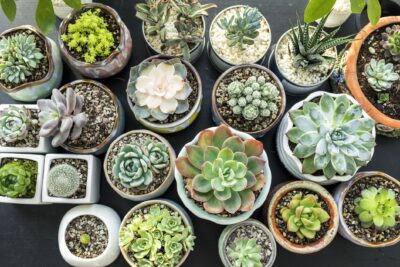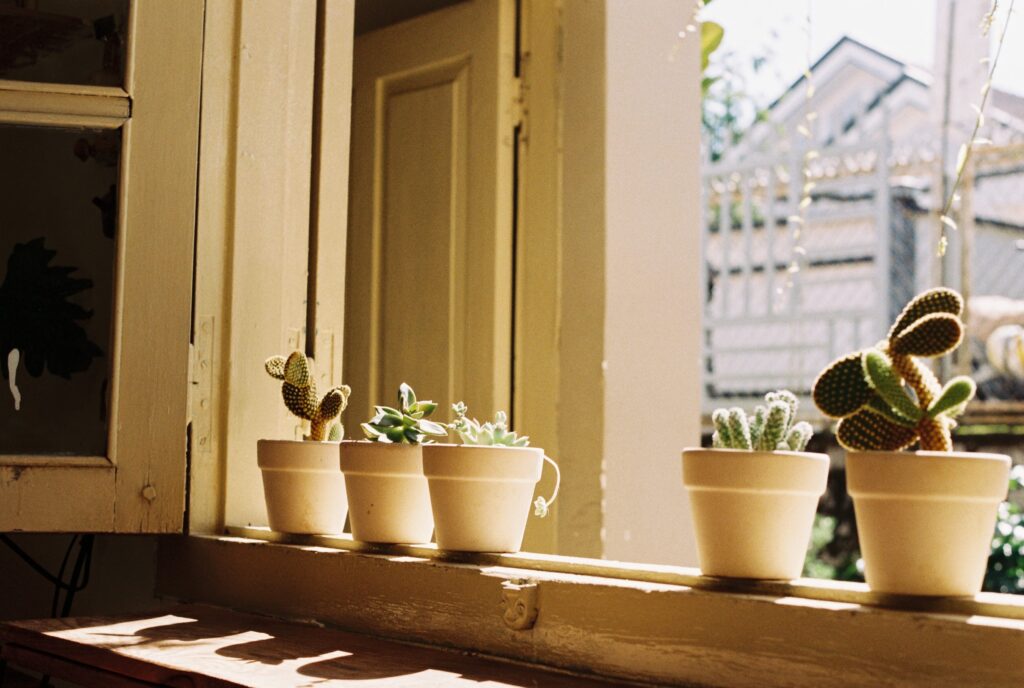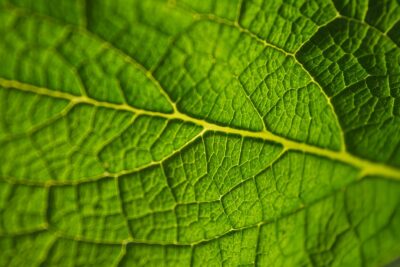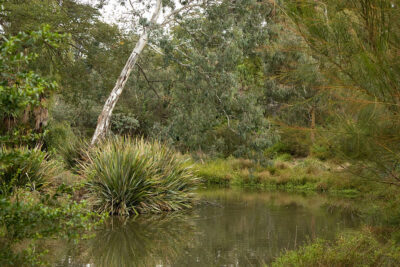
Cacti vs. Succulents: Understanding the Key Differences

When it comes to plants that thrive in arid and dry conditions, cacti and succulents are two popular choices. While they may appear similar at first glance, there are key differences between these two types of plants. Understanding these differences can help gardeners and plant enthusiasts choose the right plants for their specific needs.
We will explore the main characteristics that distinguish cacti from succulents. We will delve into their origins, physical features, and growth habits. Additionally, we will discuss the care requirements for both cacti and succulents, including their water, light, and temperature needs. By the end of this article, readers will have a clear understanding of the unique traits and care considerations for these fascinating desert plants.
- Cacti and succulents are both types of plants
- Cacti are a specific type of succulent, characterized by their spines or thorns
- Succulents generally have fleshy leaves or stems that store water
- Cacti are typically found in arid desert regions
- Succulents can be found in a variety of climates, including deserts, forests, and even indoors
- Cacti have a distinct architectural shape, often with a central column or stem
- Succulents come in a wide range of shapes, sizes, and textures
- Cacti tend to bloom with vibrant flowers, often in a trumpet or bell shape
- Succulents can also produce flowers, but they are usually smaller and less showy
- Cacti require less frequent watering than most succulents
- Succulents generally need more regular watering to thrive
- Cacti are known for their ability to withstand extreme temperatures and drought conditions
- Succulents are also adapted to survive in dry conditions, but may not tolerate extreme heat or cold as well as cacti
- Cacti are often used as ornamental plants or in xeriscaping
- Succulents are popular for their versatility and can be used in a variety of landscaping and gardening styles
- Frequently Asked Questions
Cacti and succulents are both types of plants
When it comes to plants, cacti and succulents are often grouped together due to their similar appearance and ability to thrive in arid conditions. However, it is important to understand that while all cacti are succulents, not all succulents are cacti. These two plant families have distinct characteristics that set them apart from each other.
1. Physical Appearance
One of the key differences between cacti and succulents lies in their physical appearance. Cacti are known for their unique and iconic features, such as spines, areoles, and the ability to store water in their thick stems. These adaptations help cacti survive in harsh desert environments.
Succulents, on the other hand, encompass a wider range of plant species that have the ability to store water in their leaves, stems, or roots. While some succulents may have spines, they are not as prominent or characteristic as those found on cacti.
2. Origin and Distribution
Cacti are native to the Americas, predominantly found in the arid regions of North and South America. They have evolved to withstand extreme temperatures and thrive in rocky, sandy, and dry environments. Some of the most well-known cacti include the iconic saguaro cactus and the prickly pear cactus.
 Exploring the Origins of Succulents: Unveiling their Native Habitats
Exploring the Origins of Succulents: Unveiling their Native HabitatsSucculents, on the other hand, have a more diverse distribution and can be found in various regions around the world. They are not limited to arid climates and can be found in deserts, mountains, and even rainforests. Some popular succulents include aloe vera, jade plants, and echeveria.
3. Leaf Structure
The leaf structure is another distinguishing factor between cacti and succulents. Cacti typically have reduced or modified leaves that have evolved into spines or thorns. These spines not only help protect the plant from herbivores but also provide shade and reduce water loss through transpiration.
In contrast, succulents often have fleshy leaves that are capable of storing water. These leaves are usually thick and have a waxy or hairy coating, which helps reduce water loss and protect the plant from harsh environmental conditions.
4. Flowering Patterns
While both cacti and succulents can produce beautiful flowers, their flowering patterns differ. Cacti are well-known for their vibrant and showy flowers, which often bloom for a short period of time. These flowers are typically large and brightly colored, attracting pollinators such as birds and insects.
Succulents, on the other hand, have a more varied flowering pattern. Some succulents produce flowers that are similar to those of cacti, while others may have smaller, less conspicuous flowers. The flowering time and duration can also vary depending on the species.
Although cacti and succulents share some similarities, understanding their differences is crucial for plant enthusiasts and collectors. From their physical appearance and origin to their leaf structure and flowering patterns, these two plant families have distinct characteristics that make them unique. Whether you prefer the spiky allure of cacti or the diverse beauty of succulents, both can add a touch of nature and charm to any indoor or outdoor space.
Cacti are a specific type of succulent, characterized by their spines or thorns
 Are Air Plants Succulents? Exploring Tillandsia Classification
Are Air Plants Succulents? Exploring Tillandsia ClassificationCacti are a specific type of succulent, characterized by their spines or thorns. While all cacti are succulents, not all succulents are cacti. It is important to understand the key differences between these two types of plants to properly care for them.
1. Appearance: Cacti typically have a more distinct appearance compared to other succulents. Their stems are usually thick and fleshy, often covered in spines or thorns. Succulents, on the other hand, have a wider range of appearances. They can have thick leaves, rosettes, or even a trailing growth habit.
2. Water Storage: Both cacti and succulents are adapted to arid environments, meaning they are capable of storing water to survive in dry conditions. However, cacti have specialized water-storing tissues called "parenchyma," which allow them to retain water for longer periods. This is why cacti can often survive in extremely dry climates.
3. Growth Habit: Cacti tend to grow more vertically, with their stems reaching towards the sky. This growth habit helps them maximize their exposure to sunlight. Succulents, on the other hand, have a wider range of growth habits. Some succulents grow low to the ground, while others can trail or even climb surfaces.
4. Flowering: Both cacti and succulents can produce beautiful flowers, but cacti are known for their impressive floral displays. Cacti often produce vibrant, showy flowers that bloom for a short period of time. Succulents, on the other hand, may produce flowers that are less prominent or have a longer blooming period.
5. Care Requirements: While cacti and succulents share similar preferences when it comes to light and temperature, cacti may require slightly less water due to their specialized water-storing tissues. Succulents, on the other hand, may need more frequent watering. It is important to research the specific care requirements of each plant to ensure they thrive.
Cacti are a specific type of succulent that are characterized by their spines or thorns. Understanding the differences between cacti and other succulents helps us appreciate their unique qualities and provide them with the care they need to thrive.
 Exploring the Role and Function of Aerial Roots in Succulent Plants
Exploring the Role and Function of Aerial Roots in Succulent PlantsSucculents generally have fleshy leaves or stems that store water
Succulents are a diverse group of plants that have adapted to survive in arid and dry climates. One of the key characteristics of succulents is their ability to store water in their fleshy leaves or stems. This adaptation allows them to thrive in environments with limited water availability.
Unlike cacti, which are a specific type of succulent, other succulents may have different leaf shapes, sizes, and textures. Some succulents have thick, plump leaves, while others have stems that are swollen and serve as water storage organs.
These water storage structures enable succulents to retain moisture for extended periods, making them more drought-tolerant compared to other plants. The stored water helps them survive through long periods of dryness, allowing them to endure in harsh conditions where water is scarce.
Furthermore, succulents have a unique adaptation called Crassulacean Acid Metabolism (CAM), which is a specialized way of photosynthesis. CAM allows succulents to open their stomata (pores) at night, reducing water loss through evaporation. This nighttime photosynthesis helps conserve water and allows succulents to thrive even in incredibly dry habitats.
Cacti are typically found in arid desert regions
When it comes to understanding the key differences between cacti and succulents, one of the most important factors to consider is their natural habitat. Cacti are commonly associated with arid desert regions, such as the Sonoran Desert in North America or the Sahara Desert in Africa. These plants have adapted to survive in extremely dry and harsh environments, where water is scarce and temperatures can be extreme.
 Non-Cacti Succulents: Identifying Succulent Varieties beyond Cacti
Non-Cacti Succulents: Identifying Succulent Varieties beyond CactiOne of the distinctive features of cacti is their ability to store water in their thick, fleshy stems. These stems are modified in a way that allows them to efficiently absorb and retain water, helping the cacti survive prolonged periods of drought. The presence of spines is another characteristic trait of cacti, serving multiple purposes such as protecting the plant from predators and reducing water loss through evaporation.
Due to their adaptation to desert conditions, cacti have a unique appearance that sets them apart from other succulents. They often have a more rigid and angular structure, with their stems forming distinct segments or pads. These stems can be covered in various patterns and textures, such as ridges or tubercles, adding to the aesthetic appeal of these plants.
Although cacti are commonly associated with deserts, it's important to note that they can also be found in other habitats such as grasslands, forests, or even coastal areas. However, their ability to thrive in arid conditions is what truly distinguishes them from other succulents.
Succulents can be found in a variety of climates, including deserts, forests, and even indoors
When it comes to the world of plants, succulents are incredibly versatile. These plants have adapted to thrive in a wide range of environments, making them a popular choice for both indoor and outdoor gardening. Succulents are known for their ability to store water in their leaves, stems, and roots, allowing them to survive in arid and dry conditions.
One of the key advantages of succulents is their adaptability to different climates. They are commonly found in deserts, where water scarcity is a constant challenge. Their ability to store water in their fleshy leaves and stems allows them to survive and even thrive in these harsh conditions. Succulents have also managed to establish themselves in forests, where they can take advantage of the shade and protection provided by the canopy. Moreover, their resilient nature makes them suitable for indoor gardening, requiring minimal care and attention.
With so many different succulent species available, there is a wide variety of shapes, sizes, and colors to choose from. From the popular Aloe Vera with its soothing gel to the striking Echeveria with its rosette-shaped leaves, succulents offer a diverse and visually appealing range of options for plant enthusiasts.
 Find the Perfect Succulent Plant Identifier for Easy Identification
Find the Perfect Succulent Plant Identifier for Easy IdentificationIt is important to note that although succulents can tolerate various climates, they still require proper care and maintenance to thrive. Factors such as sunlight exposure, watering frequency, and soil type can greatly impact their growth and overall health.
So, whether you're looking to create a desert-inspired garden, add a touch of greenery to your indoor space, or simply appreciate the beauty of these unique plants, succulents are an excellent choice.
Key Points:
- Succulents are adaptable plants that can survive in different climates, including deserts, forests, and indoors.
- They have the ability to store water in their leaves, stems, and roots, enabling them to withstand arid conditions.
- There is a wide variety of succulent species available, offering diverse shapes, sizes, and colors.
- Proper care and maintenance are crucial for the successful growth of succulents.
Overall, succulents are fascinating plants that not only add beauty to our surroundings but also showcase the incredible adaptability and resilience of nature.
Cacti have a distinct architectural shape, often with a central column or stem
Cacti are known for their unique and distinct architectural shape. These fascinating plants often have a central column or stem that sets them apart from other succulents. This characteristic shape is a result of their adaptation to arid and dry environments.
The central column or stem of a cactus is typically thick and fleshy, allowing it to store water for long periods of time. This adaptation enables cacti to survive in harsh desert conditions where water is scarce. The stem is covered in a waxy layer, which helps to prevent water loss through evaporation.
Additionally, cacti have specialized structures called areoles. These are small, raised bumps on the surface of the stem from which spines, flowers, and new branches emerge. Areoles play a crucial role in cacti's ability to grow and reproduce.
 Find Your Perfect Succulent with Our PDF Identification Chart
Find Your Perfect Succulent with Our PDF Identification ChartOne of the most remarkable features of cacti is their impressive variety of spines. Cacti have evolved spines instead of leaves to reduce water loss and protect themselves from herbivores. These spines can range in size and shape, from long and needle-like to short and stubby. Some cacti even have glochids, which are tiny barbed spines that can easily detach and cause irritation if touched.
Cacti's distinct architectural shape, central column or stem, areoles, and spines are key characteristics that differentiate them from other succulents. These adaptations have allowed cacti to thrive in some of the harshest environments on Earth.
Succulents come in a wide range of shapes, sizes, and textures
One of the key reasons why succulents are so popular among plant enthusiasts is their incredible diversity. Succulents come in various shapes, sizes, and textures, making them a versatile choice for any plant lover.
When it comes to shapes, you'll find succulents that range from rosettes and columns to cascading vines and paddle-shaped leaves. Some succulents, like the popular Echeveria, have tightly packed rosettes, while others, like the String of Pearls, have trailing stems that hang gracefully from containers or hanging baskets.
Their sizes also vary greatly, offering options for both compact indoor arrangements and large outdoor garden displays. From petite succulents that fit perfectly on a windowsill to towering cacti that can reach several feet in height, there's a succulent for every space and preference.
Moreover, succulents exhibit an incredible array of textures. Some have smooth, fleshy leaves, while others sport spiky or hairy surfaces. The unique textures not only add visual interest but also create an intriguing tactile experience when touched.
 Unveiling the Truth Behind Leather Petal Succulents: Real or Myth?
Unveiling the Truth Behind Leather Petal Succulents: Real or Myth?Whether you prefer the compact and symmetrical forms of Haworthias or the whimsical and irregular shapes of Stapeliads, the world of succulents offers endless possibilities for plant enthusiasts to explore.
Cacti tend to bloom with vibrant flowers, often in a trumpet or bell shape
When it comes to plants, cacti and succulents are often confused for one another due to their similar appearance. However, there are distinct differences between these two types of plants that set them apart. One of the key differences lies in the way they bloom.
Cacti plants are known for their stunning and vibrant flowers. These flowers often bloom in a trumpet or bell shape, adding a splash of color to the desert landscapes they call home. The flowers can come in various hues, ranging from vibrant reds and pinks to softer yellows and oranges. This blooming process is a unique characteristic of cacti and sets them apart from other succulents.
On the other hand, while succulents can also produce flowers, their blooms tend to be less showy compared to those of cacti. Instead of the large and vibrant flowers of cacti, succulents typically have smaller, more subtle blooms. These flowers may appear in clusters or as delicate, dainty blossoms. The colors of succulent flowers are often more subdued, with shades of white, cream, or pale pink being common.
It's important to note that not all cacti and succulents will bloom. The blooming process depends on various factors such as the species, growing conditions, and age of the plant. However, when cacti do bloom, their flowers are a breathtaking sight to behold.
Succulents can also produce flowers, but they are usually smaller and less showy
One of the key differences between cacti and succulents lies in their ability to produce flowers. While both plants are known for their unique and fascinating blooms, there is a noticeable distinction in the characteristics of their flowers.
 Discover the Fascinating Succulent Resembling an Artichoke
Discover the Fascinating Succulent Resembling an ArtichokeSucculents have the ability to produce flowers, but they are generally smaller and less showy compared to cacti. These flowers often come in a wide range of colors, including vibrant hues of pink, purple, yellow, and orange. However, unlike cacti, which often showcase large and eye-catching blooms, succulent flowers tend to be more delicate and subtle in appearance.
Despite their smaller size, succulent flowers possess their own charm and beauty, often attracting pollinators such as bees, butterflies, and hummingbirds. The intricate details of succulent flowers make them a captivating sight, especially when they bloom in clusters, adorning the plant with a burst of color.
In addition to their smaller and less showy flowers, succulents also have a wider variety of flower shapes and structures. Some succulents produce flowers that are star-shaped, while others have tubular or bell-shaped blooms. This diversity in flower shapes adds to the allure of succulents, making them a popular choice for those seeking unique and visually appealing plants.
It is important to note that not all succulents bloom, and the frequency of flowering can vary depending on the species and growing conditions. However, when a succulent does produce flowers, it is undoubtedly a delightful sight that adds an extra touch of beauty to these already fascinating plants.
Cacti require less frequent watering than most succulents
When it comes to watering, cacti have a distinct advantage over most succulents. Cacti are adapted to survive in arid environments and have developed specialized water storage tissues, known as "stems," which allow them to retain water for long periods. This adaptation enables cacti to tolerate extended periods of drought without wilting or suffering damage.
In contrast, most succulents have thicker leaves and fleshy stems that also store water. However, their water storage capacity is generally not as efficient as that of cacti. As a result, succulents typically require more frequent watering than their cactus counterparts to maintain optimal health.
It is important to note that both cacti and succulents are drought-tolerant plants, meaning they can withstand periods of water scarcity. However, cacti have evolved to thrive in even more extreme conditions and can survive with minimal watering, making them an excellent choice for those with a busy or forgetful watering schedule.
 Discover Beautiful Flowering Succulents: Learn How to Identify Them
Discover Beautiful Flowering Succulents: Learn How to Identify ThemWhen caring for cacti, it is crucial to strike the right balance in watering. Overwatering can lead to root rot and other issues, so it is advisable to let the soil dry out completely between waterings. On the other hand, succulents generally prefer more frequent watering, but it is still essential to allow their soil to dry out partially between waterings to prevent root rot.
To sum up, if you are looking for a low-maintenance plant that requires less frequent watering, cacti are the way to go. Their ability to store water efficiently makes them highly adaptable to dry conditions and ideal for those seeking a resilient and forgiving houseplant.
Succulents generally need more regular watering to thrive
Succulents, known for their thick and fleshy leaves, have adapted to survive in arid environments. As a result, they have developed the ability to store water in their leaves, stems, and roots. While cacti are a type of succulent, they have unique characteristics that differentiate them from other succulent plants.
One key difference between cacti and other succulents is their water requirements. Cacti typically require less frequent watering compared to other succulent plants. Their ability to store water for extended periods allows them to withstand longer periods of drought. This makes them ideal for those who may forget to water their plants regularly or live in regions with limited water availability.
However, it's important to note that even though cacti can tolerate drought, they still need periodic watering to stay healthy. Overwatering can be detrimental to cacti, as it can lead to root rot and other issues. It's crucial to find the right balance when it comes to watering your cacti, allowing the soil to dry out between waterings.
On the other hand, most other types of succulents require more regular watering. Their ability to store water is not as efficient as that of cacti, making them more dependent on consistent moisture. While each succulent variety may have its specific watering needs, a general rule of thumb is to water them when the top inch of soil feels dry to the touch.
To determine the watering needs of your succulents, it's essential to consider factors such as the type of soil, humidity levels, and the size of the plant. Observing the plant's behavior and adjusting your watering routine accordingly will help ensure its overall health and longevity.
 Is a Cactus a Type of Succulent Flower? Understanding the Relationship
Is a Cactus a Type of Succulent Flower? Understanding the RelationshipCacti are known for their ability to withstand extreme temperatures and drought conditions
One of the key characteristics that sets cacti apart from other plants is their remarkable ability to survive in harsh environments. Cacti are known for their exceptional tolerance to extreme temperatures and drought conditions.
Unlike most plants, cacti have adapted to store water in their thick, fleshy stems, leaves, or both. This water storage mechanism allows cacti to go for long periods without rainfall, making them highly resilient in arid and desert regions.
Additionally, cacti have unique features such as spines, which serve multiple purposes. These spines not only provide protection against herbivores but also help to reduce water loss by creating a microclimate around the plant.
Cacti also have specialized roots that are designed to efficiently absorb and store water. These roots can quickly absorb rainfall and store it in the plant's tissue, enabling them to survive in extremely dry conditions.
In terms of growth patterns, cacti usually have a slow growth rate, which allows them to conserve energy and resources. They often have a compact, low-growing form, with a thick stem that acts as a water reservoir.
Some popular types of cacti include the Saguaro cactus, known for its iconic appearance with multiple arms, and the Barrel cactus, which has a barrel-like shape and impressive water storage capacity.
Overall, cacti are remarkable plants that have evolved unique adaptations to thrive in harsh conditions, making them a popular choice for arid landscapes and indoor gardens alike.
Succulents are also adapted to survive in dry conditions, but may not tolerate extreme heat or cold as well as cacti
While both cacti and succulents share the ability to retain water and thrive in arid environments, there are some key differences between the two. One notable difference is their tolerance to extreme temperatures.
Succulents, like cacti, have evolved to store water in their leaves, stems, or roots. This adaptation allows them to survive in dry conditions where water is scarce. However, succulents may not be as resilient to extreme heat or cold as cacti.
Extreme Heat: Succulents generally prefer warm temperatures, but some species may struggle in scorching heatwaves. They can tolerate high temperatures up to a certain extent, but prolonged exposure to intense heat may cause damage to their leaves, leading to discoloration or sunburn. In contrast, cacti are well-equipped to handle sweltering heat due to their ability to store large amounts of water in their thick, fleshy stems.
Extreme Cold: Succulents are typically more sensitive to freezing temperatures compared to cacti. While some succulents can withstand mild frosts, prolonged exposure to freezing conditions can cause cellular damage and even death. On the other hand, many cacti have developed specialized adaptations, such as a waxy outer coating or spines, that provide insulation and protection against the cold.
It's important to keep in mind that the tolerance to extreme temperatures can vary among different species of succulents and cacti. Some succulents, such as certain varieties of Sedum or Agave, exhibit better cold resistance than others. Similarly, certain cacti, like the Opuntia genus, are known to be more heat-tolerant.
Understanding these differences in temperature tolerance can be crucial when it comes to selecting the right plants for your climate. If you live in an area with extreme temperature fluctuations, it might be wise to choose cacti over succulents, as they are generally better suited to handle both extreme heat and cold.
Cacti are often used as ornamental plants or in xeriscaping
Cacti and succulents are two popular types of plants that are often used for decorative purposes. While they may share some similarities, it's important to understand the key differences between them.
1. Water storage
One of the main differences between cacti and succulents lies in their water storage capabilities. Cacti are known for their ability to store large amounts of water in their stems, allowing them to survive in arid and dry conditions. On the other hand, succulents also have the ability to store water, but their water storage capacities are relatively lower compared to cacti.
2. Spines and thorns
Another notable difference is the presence of spines or thorns. Cacti are characterized by their sharp spines, which are actually modified leaves. These spines serve multiple purposes, including protection against predators and reducing water loss through transpiration. Succulents, on the other hand, may have thorns or small spines, but they are generally softer and less prominent compared to those found on cacti.
3. Flowering patterns
Cacti are famous for their vibrant and showy flowers, which often bloom in various colors and shapes. These flowers attract pollinators like bees and hummingbirds, facilitating the plant's reproduction. Succulents, while some species do produce flowers, are not generally known for their elaborate and eye-catching blooms like cacti.
4. Habitat and growth patterns
Cacti are primarily native to the Americas, particularly in arid and desert regions. They have adapted to survive in harsh conditions with minimal rainfall. Succulents, on the other hand, have a wider distribution and can be found in various habitats worldwide, including deserts, forests, and even coastal regions. They have different growth patterns and can vary in size, shape, and texture.
5. Cultural significance
Both cacti and succulents have gained popularity among plant enthusiasts, but cacti have a more prominent cultural significance in certain regions. They are often associated with southwestern and Mexican aesthetics, symbolizing resilience and adaptation to harsh environments. Succulents, on the other hand, have gained popularity due to their unique and diverse appearances, making them a favorite choice for indoor gardening and landscaping.
While cacti and succulents share some similarities in terms of water storage and adaptation to arid conditions, they also have distinct differences in terms of spines, flowering patterns, habitat, and cultural significance. Understanding these key differences can help you choose the right plant for your specific needs and preferences.
Succulents are popular for their versatility and can be used in a variety of landscaping and gardening styles
Succulents are extremely popular in the world of plants and gardening. Their unique ability to store water in their leaves, stems, and roots makes them highly adaptable to different environments and weather conditions. This characteristic allows succulents to thrive in arid climates, such as deserts, where water is scarce.
One of the key differences between succulents and cacti is their appearance. While both belong to the same family, succulents come in a wide range of shapes, sizes, and colors. From the popular Aloe Vera with its thick, fleshy leaves to the spikey Echeveria with its rosette-like formation, succulents offer a diverse array of textures and forms that make them a favorite among gardeners and plant enthusiasts.
Another distinction between succulents and cacti lies in their natural habitat. While succulents can be found in various regions around the world, including Africa, the Americas, and even parts of Europe, cacti are native to the Americas, specifically North and South America. Cacti are well-adapted to desert environments and often have specialized features such as spines or thorns to protect themselves from predators and reduce water loss.
When it comes to care, succulents and cacti have some similarities but also some differences. Both plants are known for their low maintenance requirements, making them suitable for busy individuals or those new to gardening. They prefer well-draining soil and only need watering when the soil is completely dry. However, cacti generally require less frequent watering compared to succulents due to their ability to store water more efficiently.
In terms of propagation, both succulents and cacti can be easily propagated through various methods, such as leaf or stem cuttings. This makes them excellent choices for those who enjoy propagating plants and expanding their collection.
Overall, succulents and cacti share some similarities but also possess distinct characteristics that set them apart. Whether you prefer the vibrant colors and diverse forms of succulents or the unique adaptations and spines of cacti, both plants offer endless possibilities for creating stunning and low-maintenance gardens.
Frequently Asked Questions
1. What are cacti and succulents?
Cacti and succulents are both types of plants that have adapted to survive in arid environments. Cacti are a specific group of succulents that belong to the family Cactaceae.
2. What is the main difference between cacti and succulents?
The main difference between cacti and succulents is that cacti have areolas, which are small, specialized structures from which spines, flowers, and new growth emerge. Succulents, on the other hand, do not have areolas.
3. Do cacti and succulents have similar care requirements?
Generally, cacti and succulents have similar care requirements since they both store water in their leaves, stems, or roots. They thrive in well-draining soil, ample sunlight, and infrequent watering.
4. Can you easily identify a plant as a cactus or a succulent?
While there are some distinctive features that can help in identifying a plant as a cactus or a succulent, it can be challenging at times since there are succulents that resemble cacti and vice versa. It is best to consult a plant expert or use plant identification resources for accurate identification.
If you want to read more articles similar to Cacti vs. Succulents: Understanding the Key Differences, you can visit the Identification category.






You Must Read